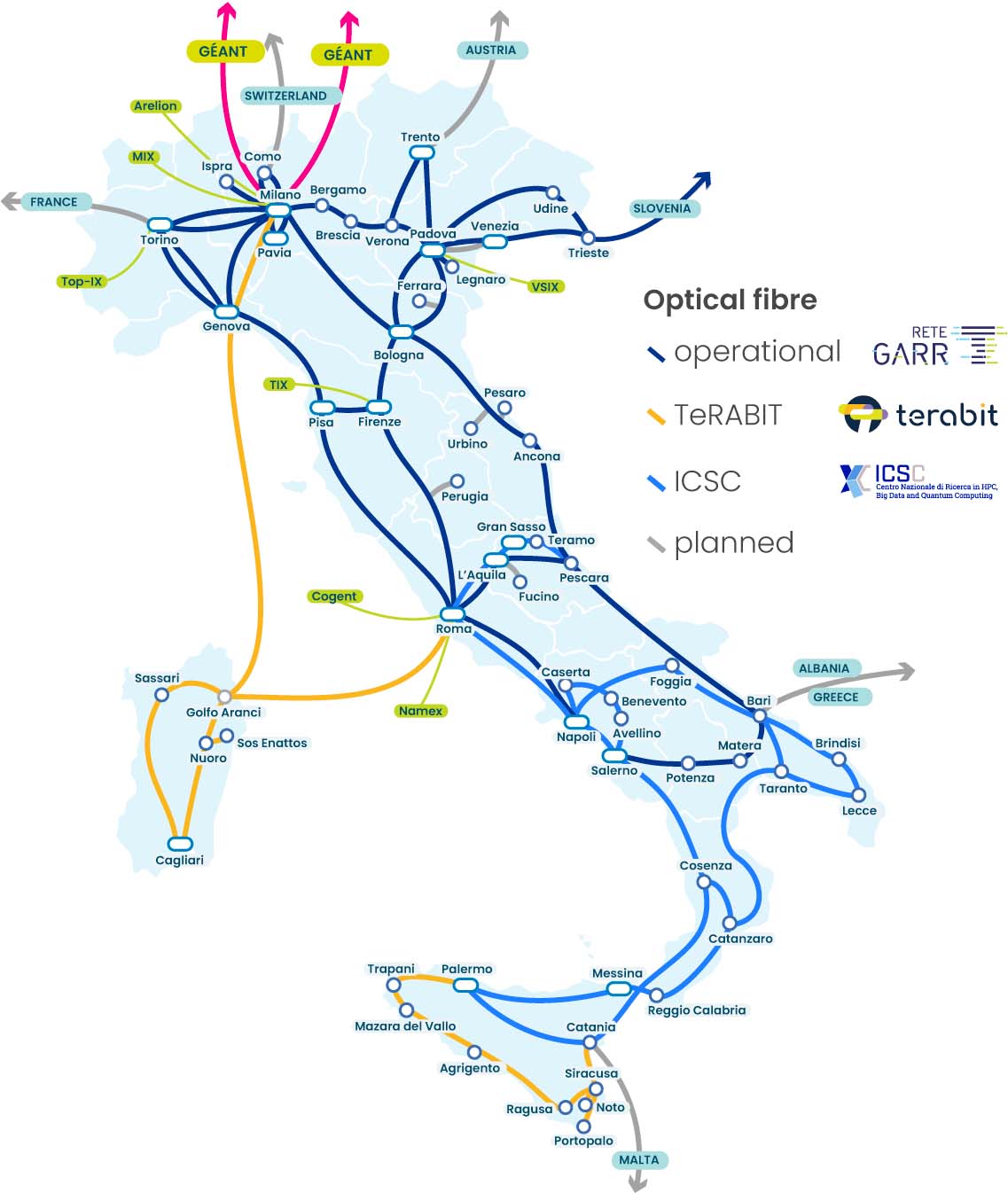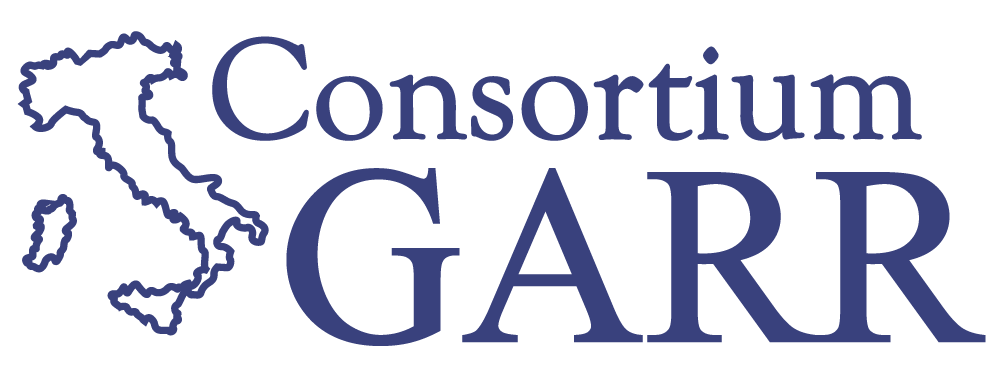National Digital infrastructure
The GARR network interconnects at ultra-high capacity universities, research centres, libraries, museums, schools and other education, science, culture and innovation facilities.
The fibre optic infrastructure is based on leading-edge telecommunication technologies and covers more than 15.000 km of backbone and access links.
As of today, the capacity of single backbone links reaches 100Gbps, while access links can reach 40 Gbps depending on the connected site’s bandwidth requirements. Thanks to the ample scalability of the technologies we use, such capacities can easily evolve with the users’ demands and the first 100Gbps access link will be available soon.
Network Map
Last update: July 2024
Quality
The network’s features entail very low transmission delays, thus it is ideally suited not only for transferring very large amounts of data, but also for real-time data transmissions and HD audio-visual communication.
High capacity and coverage
With more than 100 Points of Presence distributed throughout the national territory, the GARR network provides symmetric, high-capacity connectivity and advanced services to more than 1.000 user sites including universities, music conservatories and art academies, research centres, laboratories, observatories, museums, libraries, schools and more.
Scalability
As the infrastructure is almost entirely based on fibre optics and managed in-house by GARR, it is possible to swiftly respond to the user community’s latest requirements by upgrading links and adding new ones without interfering with the network’s global performance.

GARR Network
GARR Network map. Last update: May 2024


 Telegram
Telegram